| Submitted 15 September 2001 |
First, a little geography of Taiwan. The Detachment was located on a mountain approximately 17 miles from Taipei. The main road from the city was paved, but, after turning off towards the mountain, the road was pure dirt and rocks. The transportation of choice was the ĺ-ton weapons carrier because it gave the best ride. Jeeps and six-by's were kidney killers. Chinese nationals drove all military vehicles leaving the site.

The site was located on an old WWII Japanese airstrip. There was a small village (Nan Sz Bu??) a few hundred yards away with a few basic bars and B-girls. Quite a bit of the time, this village was off-limits because of sanitation and black market activity. The DF site was outside of the compound, probably 100 - 200 yards away. The local Chinese troops used the airstrip to practice for their parades (specifically the double-ten day parade). They went Ďround and Ďround the strip with their trucks and towed artillery, and our DF followed all that metal, effectively putting us out of commission. There were several detachments of Chinese troops in the vicinity including a few that were repatriated troops that had surrendered in Korea. These troops wore white uniforms.
At times, the Chinats would fire their 75's and 105's directly over our site. This increased the pucker factor because they had been known to drop a few rounds short, just about wiping out one village. They also used to put on firepower demonstrations for visiting dignitaries in the tea patches near our site. One of the main attractions was to have P-51's come over firing their .50 calibers. One time, unfortunately, they were firing directly over the gathered crowd, and the used brass cartridges were falling into the crowd.
When I arrived in June of 1955, all personnel were housed in 8-man squad tents. The only 'permanent-type' buildings were the mess hall, the two Ops buildings, and the Comm Center (although this may have been a trailer). There was also a little round building that served as the AP shack and entrance to the Ops compound. The Orderly Room and Supply Room were tents. I know because, in addition to being an Intelligence Officer, I was also Adjutant and Supply Officer. There was an Army ASA unit adjacent to our site and also a small Navy detachment. There was a small Airbase squadron detachment to take care of the physical facilities.
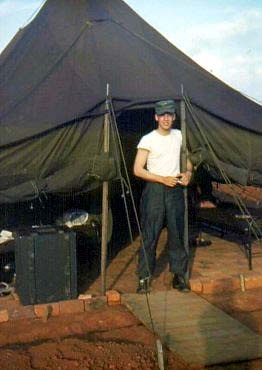
Depending upon the weather, the entire site was either dust or a sea of mud. One of the first things done when arriving there was to buy a pair of rubber boots. This was an accepted part of the uniform.
The latrine was a slit trench over which were wooden seats, and the whole thing was inside a tent. Can't remember if it was a six- or eight-holer. It was located a fair distance from the quarters, and that fair distance became a long distance if you were in a hurry. Periodically a new trench had to be dug and the latrine moved. A favorite story was about a previous 1st Sgt who heard that burning with diesel fuel was a good way to clean out the old trench, so he decided to try it. Unfortunately, no one told him how much diesel to use, and he poured in an entire 55-gal drum. That sucker burned for two days. The urinal was a pipe stuck in the ground quite a distance from the latrine. Sometimes there was a funnel on top, sometimes not. The prevailing winds made 75 percent a good score.
The troops (203's and 29's) worked a weird shift system, but they seemed to like it. They would start their rotation at 1200 and work until 1700. They would be back at 2400 and work until 0700, then off until 1700 and work until 2400. After coming back at 0700 and working until 1200, they would be off for 48 hours. Many of them would head for Taipei and their girlfriends for the whole time. The officers generally worked 7 days a week. There were times we didn't get into town to relax for a month. We usually stayed at a Chinese hostel called the Liberty House. We also had courier duty (which we shared with the Army and Navy) twice a week. It got us into town, but it was not a fun detail.
Burning classified material also was not fun. Our burning facility was a 55-gal drum with some air holes near the bottom. It was situated outside the Comm Center. Needless to say, this sometimes took hours to burn all the classified.
All the power cables to the Comm Center (and the other facilities) were buried in the ground. They had been spliced so many times, and had so much leakage, that just touching a metal object would give you a shock. Light bulbs, at the opposite end of the site from the generators, usually burned at about half-power, if at all.
One of my first jobs was helping lay a brick floor for the BOQ tent. Most of the officers pitched in for this party, and it did make things a little more comfortable. We sat out one typhoon in that tent. Near 0200, the canvas started to rip. I remember standing on a chair on top of a table trying to nail the canvas to the tent pole. The whole thing collapsed about 0300.
In the late summer or early fall of Ď55, they finally provided some better living facilities. They built several buildings, sized 20' x 60', with metal walls and roof, and a concrete slab for the floor. The only heating was by one pot-bellied stove in the middle of the building. These buildings were used as barracks, and they even allowed the officers to have one for a BOQ. Of course, that one was the farthest from the generators with consequent dim lighting. We did manage to scrounge up a sink and rigged a 55-gal drum of water to it. That was our running water. But it did look like civilization was on the way.
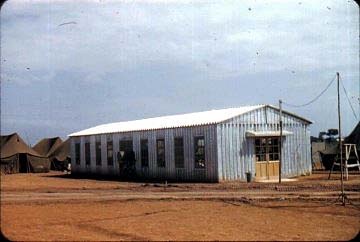
ATF (Air Task Force) 13 set up shop in Taipei and took on a lot of administrative duties and generally made life a bit easier for us. One interesting bit ó they had a couple of C-47s assigned to them as well as quite a few rated officers that needed to get in their 5 hours per month flying time. They set up a weekly shuttle to Hong Kong leaving on Friday and returning Sunday. Several pilots would go to get in their time.
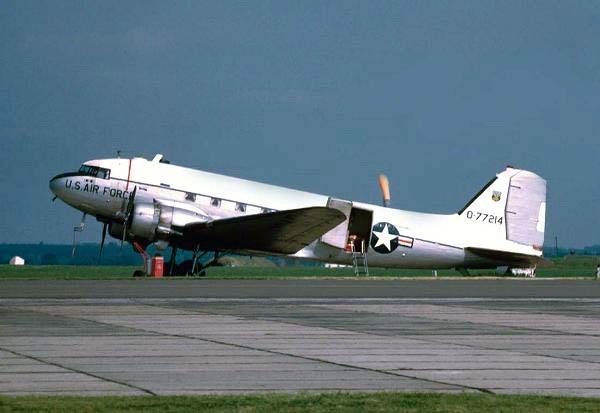
Unfortunately, there was only one navigator available, and a navigator was required for all over-water flights. That guy worked his butt off. They allocated a few seats each week to us, so quite a few of our personnel got to go. I was the one compiling the roster, and was saving my trip for the following spring. By then, however, I had been sent to the 6927th and didnít get to see Hong Kong.
A few miscellaneous thoughts. At that time, all the US personnel were paid in $US (greenbacks). There was no MPC used on the island. The legal rate of exchange was 24.68 Taiwan dollars to one US. It was legal to change your greenbacks in the Service Clubs at 34 to one; however, most of the exchange was done (illegally) in the bars at 40 to one, especially for $20 bills. One strange occurrence ó there was a small window of time when it was legal to change your local currency back to $US at the legal rate when leaving the island. I had a friend that brought his car over and then sold it to one of the locals for Taiwan dollars when he left. He made quite a profit on it.
There was a small (very) PX/BX in a tent at Lin Kíou. This was useful for buying cigarettes, but it seems like all they ever had was Old Golds. There was also a small barbershop run by the locals. A haircut cost somewhere around 30 cents and a shave about a quarter. The shaves were interesting as the barber would shave your ENTIRE face: forehead, eyelids, and anything else he could reach, all with a straight razor. If youíve never had your eyelids shaved, you are missing a real experience. I have to admit that the haircuts were really good, especially for the price.
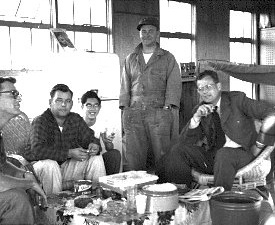
Letís talk about liquor. On Taiwan, it was cheaper (and better for you) to drink liquor than water. Good Johnny Walker scotch was about $2 a fifth, and Canadian Club was approximately $1.50. All bottled liquor sales were done through the State Department commissary. To purchase liquor, you had to put down a $50 deposit to get a card. Remember, this was 1955, and $50 was a fair amount of money. The commissary kept records of the sales per card and reported to the Army Provost Marshal any suspiciously large purchases. I speak of this from experience. Ten of the airmen put up $5 each for me to get the card. The first two months of use, I had to explain to the Provost Marshal why I was buying so much booze. Not needing that hassle, I turned in the card and returned the airmenís money.
While we didnít get in to Taipei on pleasure that often, we did have to go there quite a lot on AF business. Most of that was conducted at the ATF 13 compound, but our courier runs took us to most of the other US military locations scattered throughout the city. I was Pay Officer, so at least once a month (the day before payday) I had to come to the Army Finance Office to count out, and sign for the military and civilian payrolls. In addition to the ATF 13 site, we went to the MAAG compound quite a bit. Thatís where the main PX was located, and there were tailor shops just next door.
You could buy good material in the PX and have it made into suits, coats, trousers, whatever at the tailor shops. The material was good, and the tailoring was good, but a lot of people found out that the thread they used was miserable. Within a year a lot of it disintegrated. I was determined to have either a suit or a sport coat and slacks made each month. That resolve lasted for two months before I gave up.
There was an airmenís club in the MAAG compound, and next door was a small USAF infirmary. Upstairs were four or six beds for the less-serious ill. Anyone with a major illness was airlifted to the Army hospital on Okinawa. This included pregnant wives of US personnel shortly before they were due. When confined to a bed there in the infirmary, the procedure for obtaining meals was to order them from the airmenís club downstairs.
The best place to eat in town was the Grand Hotel. This was owned by Madame Chiang (the Gimoís wife) at the time. Several of us would go together and each order a dish and quite a bit of rice wine. They made good martinis there, but drinking in the restaurants was quite a bit more expensive than eating. Had something to do with a liquor and tobacco tax on the island. I remember several meals there when half the people eating with us had no idea what they were eating because of the copious quantities of rice wine consumed prior to the meal. There were steaks available at some of the restaurants, but they were usually water buffalo (which were good).
Speaking of food, all our food for the site was flown in from Okinawa. Sometimes the planes didnít make it on time, so we ate B rations. For those of you unfamiliar with that, B rations were C rations in larger quantities. I did get awfully tired of reconstituted (powdered) milk. It was palatable if it was ice cold, but that was hardly ever the case.
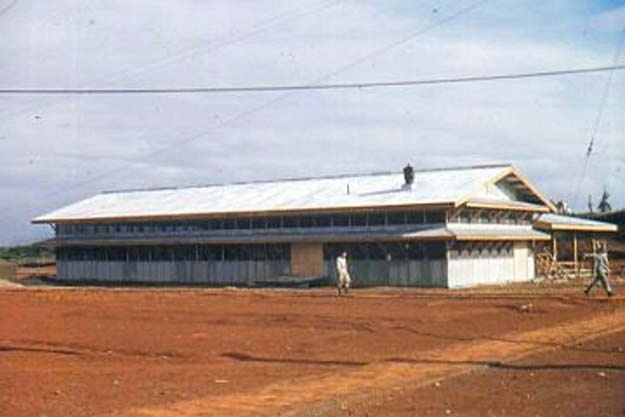
The streets of Taipei were filled with people and pedicabs, probably at a ratio of about 10 to one. There were no motor scooters in 1955, and, in the whole city, there were just SEVEN taxis including one or two with right-hand drive. Jung Shan Bei Lu was six or eight lanes wide with the two center lanes for motor vehicles; however, these two lanes filled up with people and san lun che (pedicabs, for you non-Chinese speakers). The only thing I found that would move the pedestrians out of the way was the blast of an air horn on a 6-by-6. Jeeps and weapons carriers didnít faze them. I swear their brains were in neutral. By the way, some of the bar girls made so much money from the GIís that they owned their own pedicabs.
In 1955 there were very few round eyes in Taipei who spoke Chinese. We would stand on the street corners and listen to the little kids call us da bizi (big nose). They would usually get slowed down when we called them melon heads, gua tou, because of their clipped heads. Any time that we would haggle with a vendor or a pedicab driver, a crowd would gather to listen. And prices usually dropped quite a bit when we spoke Mandarin, especially with a Taiwanese accent.
I guess there are a few other tales I could dig up. One would involve our courageous Ops Officer, Capt. George Card, (or, as Harry Sweeney said sarcastically, ninety-eight pounds of blue, twisted steel). He used to mount after-hours raids, complete with loaded .45s, into the Teapatch to catch off-limits personnel. I think he was trying to relive his days as an MP, or at least he told us that is what he was. We did have one cook that had practically gone native and spent all his off-duty hours in the Teapatch. He was continuously ingesting black-market antibiotics to take care of his perpetual VD.
Towards the end of my tour, I contracted hepatitis and was shipped to Okinawa to recover. I had been trying to get transferred there anyway because my wife was an Army nurse at Mercy hospital on Okinawa. I spent two weeks in the hospital and three weeksí convalescent leave there. The Army was nice enough to let me and my wife occupy a vacant nursesí quarters for that three- week period. USAFSS, in its great wisdom, finally allowed a swap between me and a Lt. from the 6927th on Okinawa. I donít think he was too happy about it, but it suited me just fine. Thatís about it for my story on LinKou during its founding year of 1955.